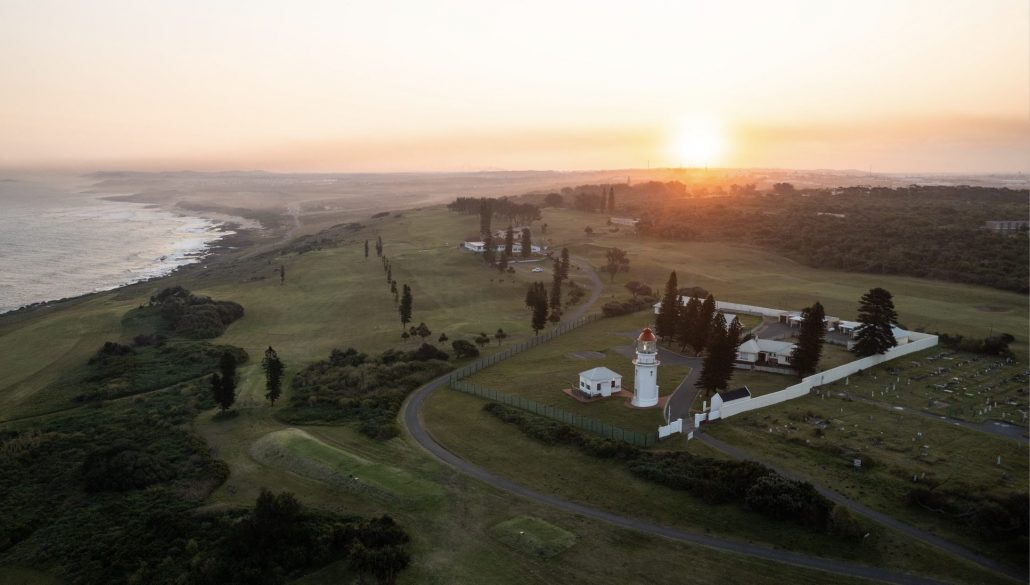The friendly atmosphere of East London’s no-frills West Bank Golf Club makes up for any shortcomings, writes MARK SAMPSON.
The world over, the phrase ‘the wrong side of the tracks’ is used to describe a location that is poorer, or less privileged, than the surrounding area; something very common to South Africa. West Bank Golf Club, aptly named as it is located on the western side of the Buffalo River, is an area where suburbia and industry merge.
The area in which the golf course is located is very much an industrial zone, flanking West Bank and Brookville suburbs. A large part of this area is home to the city’s correctional facilities.
You can find some of South Africa’s largest companies here, including the Mercedes-Benz manufacturing plant that has more than 3,300 employees. Engen, Freight Marine shipping and Foxtec-Ikhwezi, a supplier to Mercedes-Benz, are also based here.
East London dates back to the early 1830s when the British military found lines of communication between Port Elizabeth and the surrounding Albany area were severely compromised.
The Buffalo River was found to be more suitable than other rivers in the area, including the Kowie and the Great Fish River to the south, as a possible harbour due to its depth and navigability. The river divides East London, with the northern side holding the main central business district, the more affluent suburbs and East London Golf Club.
West Bank was founded in 1907 as a nine-hole course, with Kimberley blue gravel putting greens, generally circular and no bigger than five metres in diameter. The surrounding area was farmland.
The nine holes were designed to flow across the sloping land that descends from the clubhouse to the ocean, thereby creating the common feature of sloping fairways. The course remained a nine-holer until around 1930 when it was extended to a full 18-hole course.
The course followed the natural lie of the land, with very little excavation required. The front nine primarily plays in front of the clubhouse, overlooking the ocean, while the back nine meanders inland and then routes back to the clubhouse.
The modern layout, due to low budgets and limited staff, has few bunkers and wide fairways. The greens are not the most receptive and can play a bit slow, but West Bank has its place in the area, and rightfully so.
The Eastern Cape, as a whole, is not a wealthy province and as such many of the golf-playing residents in the second-largest city of the Eastern Cape cannot pay excessive prices. No frills, no fuss, should be the motto for the Eastern Cape.
Like many other courses in the province, such as Royal Port Alfred, St Francis Golf Club and Belmont in Makhanda, the club is greater than the sum of its parts, mainly due to the wonderful people found here and a lively 19th hole. Down-to-earth and friendly, with welcoming staff and members, is what is expected in this province in general and West Bank is no different. It is an accommodating course both in the playing and in the members.
At 5,502 metres in length, it is not very long, but being a coastal course one can expect the wind to play a part in the round and test your swing and your club selection.
The front nine plays to a par of 37 with three par fives.
The course is home to a working lighthouse – Hood Point Lighthouse – behind the 1st green, making it one of only three courses in the country with this feature – the other two being Milnerton Golf Club and Metropolitan, both in Cape Town.
Another interesting point is the West Bank Cemetery, which is located within the course boundaries, with holes 7, 8 and 9 looping around it. Dating back to the early 1900s, it holds the graves of several World War II servicemen.
The entire front nine plays parallel to the ocean, so there are holes that play with and against the prevailing wind.
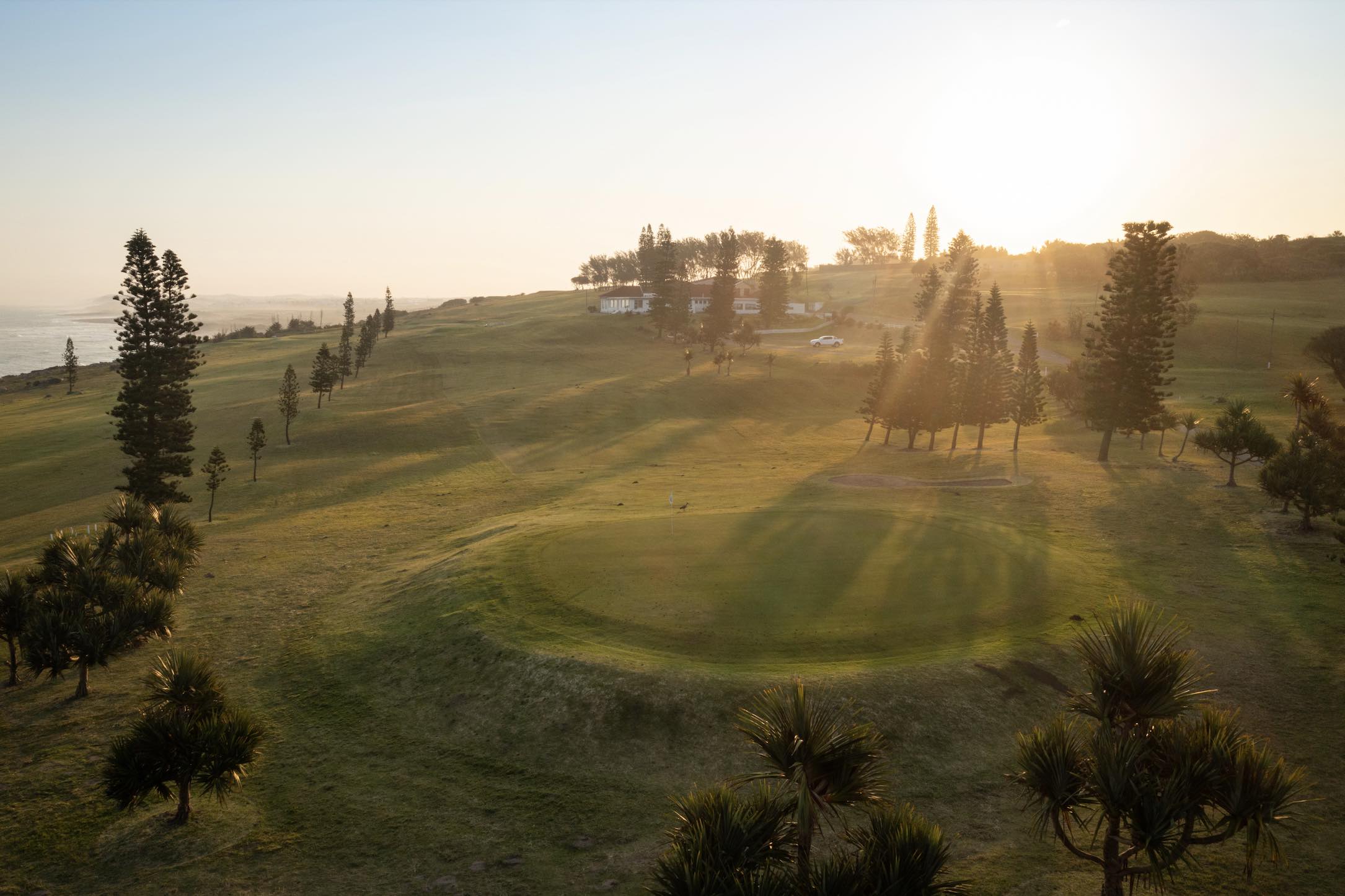
With two par fours under 300 metres and a par three of just 134 metres, the front nine certainly is open for a good score.
The 1st eases you into the round; a gentle par four playing to only 238 metres. The 3rd and 4th holes play closest to the ocean, so be sure to keep an eye out for dolphins and whales, which are not uncommon in the area.
Interestingly the 3rd is also the part of the course closest to the famous East London Grand Prix circuit where, it is said, motorsport first began in South Africa. It hosted major events for over 80 years and is now undergoing an upgrade to be restored to its former glory.
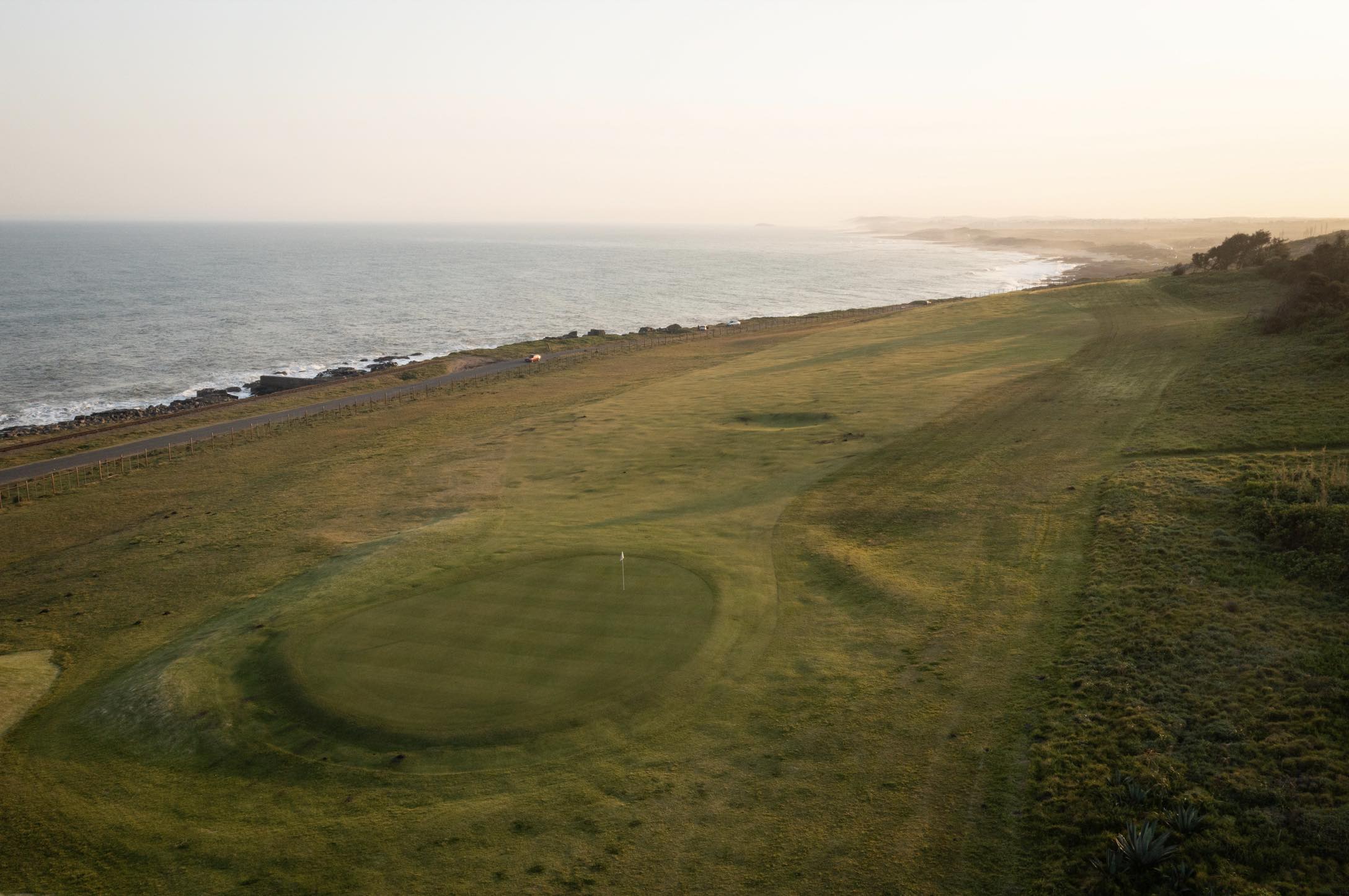
The back nine is a little tighter, as it makes its way inland. Most of the holes are tree-lined, making them a little more intimidating, with the 11th and 17th prone to strong cross-winds.
The stroke-one 11th is very intimidating as it has out of bounds along its entire right side and if the southwesterly is up, be sure to aim down the left side of the fairway. The hole plays 398 metres straight up a gradual incline to another small green protected by a small bunker on the right side. Finding this green with a long-iron in hand and a cross-wind can prove difficult.
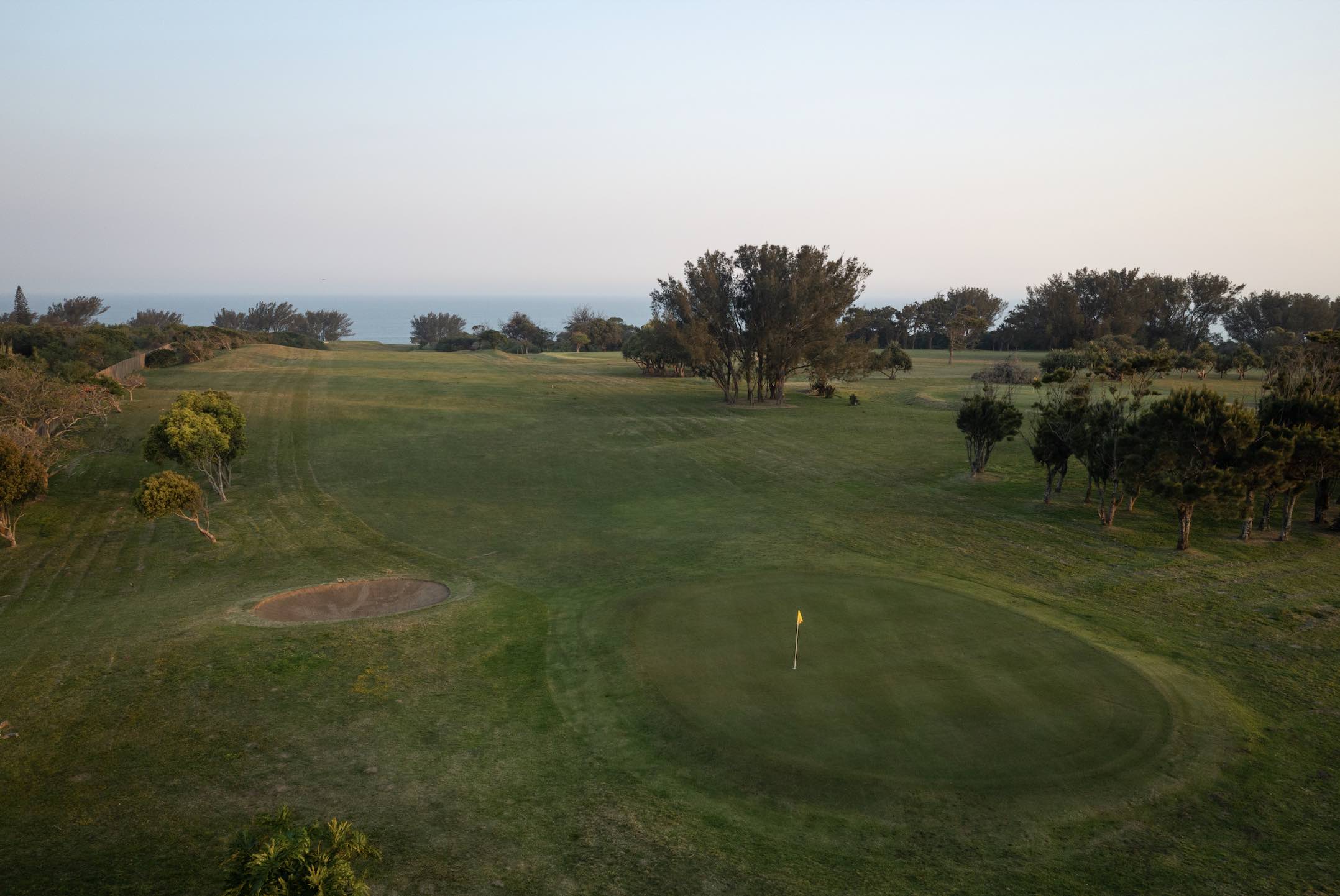
Holes 12 and 13 can be good scoring holes with a par five of only 436 metres followed by a par four of 301 metres. Both have spacious fairways lined by ample short rough.
The signature hole at West Bank is the par-three 17th (see below). The par-four 18th deposits you back at the clubhouse and can be a tough finish when played into the southeaster, despite measuring only 343 metres. The back nine, at par 35, is more testing and will certainly examine your club selection.
The course has hosted several large tournaments through the years, including the SA Junior Championships in 1999, which was possibly the breakthrough tournament of a 17-year-old Richard Sterne.
He won the tournament with a score of three-under-par 286 to win by four. He also went on to win the matchplay title, becoming the first player to win the double of SA Juniors and SA Amateur.
In 1998, the course also hosted the SA U23 teams event, where the Transvaal Eagles won the title from Eastern Province/Border Dolphins. More recently, the course hosted the Eastern Province and Border men’s championships, where a course record of 62 was shot by reigning SA Amateur champion Kyle de Beer en route to a three-round winning total of 16 under par.
The 19th is well positioned high above the Indian Ocean, with a patio sprawling out of the bar area. It is both homely in feel and price, allowing for much banter after the round.
West Bank Golf Club is a friendly country course with no frills. Prices are very affordable and the course positions itself to a market that cannot afford the mainstream course prices.
As such, the course maintenance may not be as impeccable as your top-level courses. At the same time, the enjoyment factor is right up there. Those with a good short game will enjoy the course as the small, firm greens make for elusive targets.
That said, if you don’t find them, one putt is still a good possibility on these greens.
To top it off, the ocean can be seen from all 18 tee boxes, putting it into a potential ‘links’ category – although it is best described as a country layout.
Regardless, one can rest assured the warm, homely bar area will be alive with banter and cheering of the members who always welcome guests with open arms. Whatever the course lacks in aesthetics, it easily makes up for with its friendly charm.
A must-play course if you are in the area.
SIGNATURE HOLE
17th hole, 168m, par three
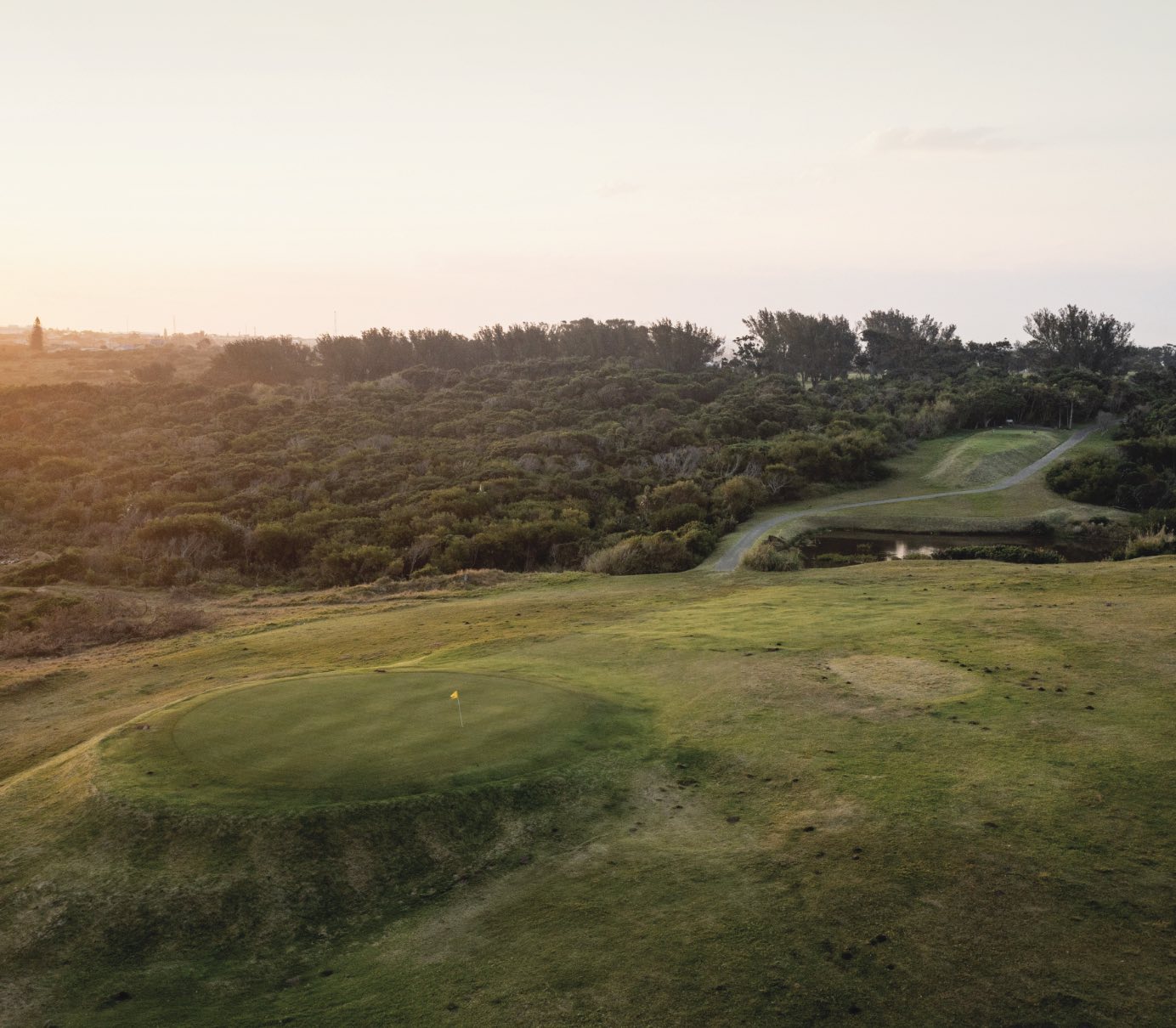
The par-three 17th at West Bank Golf Club screams its signature status.
At 168m off the tips, your average player will need a long-iron or hybrid. The tee is set back in the thick coastal shrub, protecting you from whatever wind may be around – and as a coastal course, particularly in the Eastern Cape, one can expect a strong breeze for the most part.
One needs to clear a small water hazard before reaching the green, which rises from the ground like a pimple. Referring back to the original small, round greens, it seems this green has not been touched since 1930. Although the surface is relatively flat, finding it is not easy, especially with the steep drop-off around the back and sides of its surface. When the wind is up, this stroke-nine really has the intimidation of a lower-rated hole.
Long-time member and club captain Gavin de Lange shares some insight on how to tackle the 17th.
‘By the time you reach the 17th, you will have an idea as to whether the southeaster or the southwester is blowing. Either way, it will be a cross-wind, as you are playing directly toward the ocean. Going over the back is almost a guaranteed bogey, so make sure you select your club carefully.
‘Once you have confirmed which wind is blowing, select your line and commit to the shot. Keeping the ball low, and out of the wind, is preferable, and when in doubt, short is a good leave. Apply the standard rule of “place the ball back in your stance, hands forward and swing easy”. Taking an extra club and using an abbreviated swing also helps keep the ball down.
‘Once up on the green take a moment to enjoy the view. It certainly feels like you are up on a pedestal, viewing the ocean. With the small green a two-putt is very likely as it also does not have any major slope. Par on this hole is a great score.’
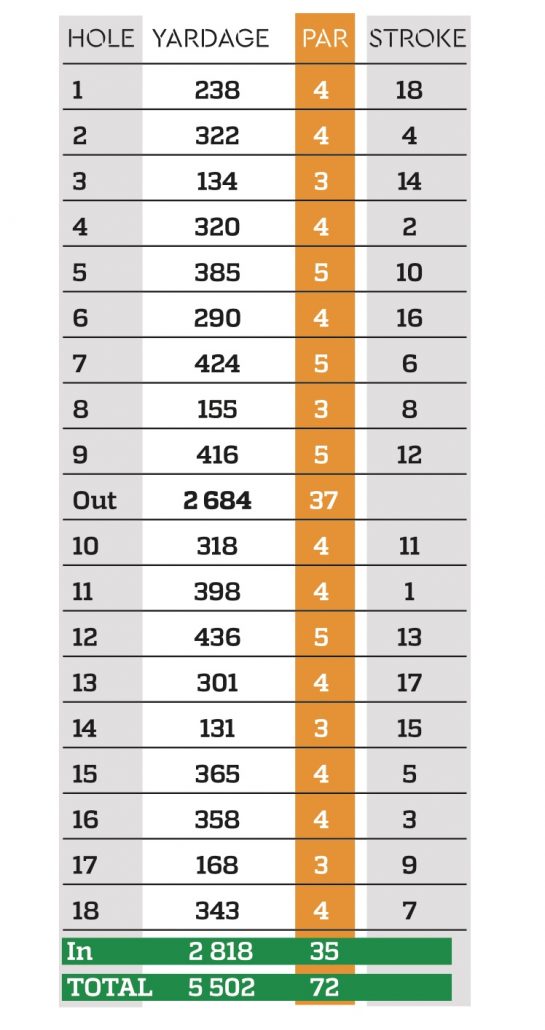
GREENFEES
Adult visitor: 18 holes – R350, 9 holes – R210
Thursday special off-peak: 18 holes – R240, 9 holes – R190
Under-25 students: 18 holes – R200, 9 holes – R160 (If not a student, adult cost is applicable)
Under-18 scholars: 18 holes – R20, 9 holes – R20
Golf Carts: 18 holes – R335, 9 holes – R215
GETTING THERE
From the airport turn right towards East London CBD, drive 3.5 kilometres and turn right into Potters Pass. Drive down Potters Pass for 1.2 kilometres then make a sharp left (almost a U-turn) on to Molteno Drive. Drive 3.3 kilometres and turn left into Wetzlar Street. The entrance to the club is 280 metres up the road on your left. Follow the road to the clubhouse.
ADDRESS
Hood Street, West Bank, East London
CONTACT DETAILS
Telephone: 043 731 1523
Email: [email protected]
For further information see West Bank Golf Club on Facebook
– This article first appeared in the February 2023 issue of Compleat Golfer magazine.



